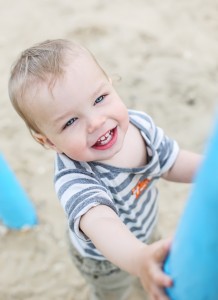The post Add an Avo to your (and baby’s) diet! appeared first on All4Baby.
]]>High levels of folate
Avos have been around since the days of the ancient Mayan and Aztec civilisations – the latter which believed the fruit had aphrodisiac properties and enhanced fertility.While the jury’s still out on the conclusive impact of avoson fertility, what we do know is that their high levels of folate make them a dietary must-have for women who intend falling pregnant.
Folate is an important nutrient that helps prevent neural tube defects, promotes a healthy nervous system and is essential for the formation of red and white blood cells, normal cell division and growth in foetuses. It is recommended for all moms-to-be as well as pregnant moms until the end of the first trimester at least when this critical foetal development is taking place.
Energy booster
Of course avos make for a satisfying snack for pregnant moms who need to keep their energy up throughout their pregnancy. This is especially true during the second trimester when they’ve kicked the morning sickness and feel hungry more often, and the third trimester when big meals are off the menu.
Perfect first food
Avos are also a god-send once baby is born. Not only are they quick, easy and incredibly convenient meals for breastfeeding moms who don’t have a lot of time on their hands, but their soft, buttery texture means they’re also perfect first foods for babies from six months onwards.
Babies need carbohydrates, fats, proteins, vitamins and minerals for optimal growth during those first two vital development years. Avos help meet these nutritional requirements by providing potassium, vitamin E, iron, lutein and beta-carotene. Avos are also a source of fibre and monounsaturated fats and are energy dense, all of which are great for growing babies.
Easy to prepare
It’s a good thing avos are so easy to prepare! Moms can add sliced avo to crackers or rice cakes or simply eat them out the skin for fuss-free snacks, or include diced avo in salads, pastas or with grilled chicken or fish for a more substantial meal. For babies, mash avo for first meals (from six months), and cube avo for older babies and toddlers who are self-feeding.
There’s no doubt, avos are a fantastic food from bump to birth and beyond!
For more avolicious recipes visit www.avocado.co.za, like us on Facebook www.facebook.com/iloveavocadoSA and follow us on Twitter @iloveavos
The post Add an Avo to your (and baby’s) diet! appeared first on All4Baby.
]]>The post Breastfeeding a newborn: Tips to expressing milk appeared first on All4Baby.
]]>Practical expressing tips
- Before expressing, wash your hands thoroughly and make sure that all equipment for expressing is washed, rinsed and sterilised.
- Express approximately the amount the baby takes at a feed.
- Make sure that the storage container is covered or sealed and labelled with the current date.
- Place in the body of the refrigerator where it is colder, not in the door.
- Refrigerate breast milk for no longer than 48 hours, after which time it must be used, frozen or discarded.
- Breast milk may be kept frozen for up to three months. Once the milk has been thawed, it can be refrigerated for up to 24 hours. It should never be refrozen.
- Breast milk should be thawed overnight in the refrigerator, or under warm water.
- To warm breast milk, place in a bottle warmer or under a warm tap. Shake the bottle to mix, as the fat content may become separated.
Keep your milk fresh
- Always discard any milk that is left over at the end of a feed.
- Do not add fresh milk to previously expressed milk in the freezer. If you are storing milk in the fridge to add to during the day, only add milk which has been expressed into a sterile container and cooled for a few minutes under a cold tap. Milk like this can only be stored for a maximum of 48 hours.
- Transport expressed breast milk in an insulated container with an ice pack.
- Fir freezer storage, your freezer should be cold enough to keep ice cream hard.
- Milk can also be hand expressed, ask you health care practitioner for advice.
Storing your breast milk
Philips AVENT provides mothers with a convenient alternative when it comes to keeping their breast milk fresh. The Breast Milk Storage Bags provide safe and secure storage for the precious content.
Each bag can hold 180ml of breast milk and is conveniently pre-sterilized for immediate use. The bag is leak-proof due to the double zipper seal and can be stored in the fridge or freezer. It is also sturdily designed to stand up on its own and to lay flat for easy storage. The bags wide opening means filling the bag and pouring are easy tasks.
The Breast Milk Storage bag has ‘sealed and sterilised’ as well as ‘pour here’ icons clearly marked for ease of use. Each bag has a write on tab for mothers to add the name, volume, time and date of when the milk was stored; this also eliminates the risk of puncture. The bags should not be used in the microwave and ought to be disposed of after use.
Philips AVENT cares about the environment and society at large and strongly supports eco-design of products that is why these handy bags are made of BPA free material.
About the Author: There are 25 bags in the Philips AVENT Breast Milk Storage packs which are available at Baby City at a recommended retail price of R 167.97 (incl VAT).
The post Breastfeeding a newborn: Tips to expressing milk appeared first on All4Baby.
]]>The post The sensory link to your baby’s sleeping disorders appeared first on All4Baby.
]]>Sleep is vital for our physical and emotional well being. It is well known that it promotes the secretion of growth hormone as well as restoring brain processes. This enables us to perform subtle cognitive and social tasks as we go about our daily lives.
It may be surprising to note that the very same environmental, behavioural and social factors that may interfere with sleep, can play an important role in ensuring healthy sleep habits from the start.
In daily practice, when one is presented with an “unsettled infant”, or a “badly behaved toddler”, lack of sleep, or plain exhaustion is often not considered, as the practitioner is often too busy looking for a “physical reason” for the childs’ distress.
Physiological factors that affect sleep
There are obviously certain physiological factors to exclude from the outset, and a detailed history from the parent (or caregiver) is necessary. The obvious factors should include the following:
- Illness
- Nutrition
- Digestive disturbances
- Allergies
- Anaemia
- Parasitic infection (worms)
- Candida (thrush):oral/systemic/peri-anal
- Teething
- Nappy rash
- Emotional trauma
Once these factors have been excluded, the area of sensory overload should be investigated.
Sensory integration
The behaviour displayed by an infant or toddler upon exposure to sensory input will differ depending on the manner in which the stimulus is interpreted.
The sensory system functions in order to form a composite picture of what is going on around us. Sensory integration is the critical function of the brain that is responsible for producing this picture.
For most of us, effective sensory integration occurs automatically, unconsciously and without effort. However, for most infants, particularly premature babies, and toddlers with sensory integration difficulties, this process is inefficient due to immaturity of the sensory system. Therefore, babies and some toddlers will have difficulty in processing too much sensory stimuli.
Exposing a baby to sensory stimuli
When a child is exposed to sensory stimuli, a pattern usually occurs.
The child may interpret the stimuli as non stressful and respond to the stimuli appropriately. This response will not affect the stability of the behavioural subsystems of the nervous system.
Approach signals
The child will display self-regulation approach signals.These signals indicate that she is in control, and is neurologically well organized. Children displaying these signals appear to be inviting interaction.
These signals include:
- Soft and relaxed facial expression, with alert and open eyes
- Relaxed limbs with smooth body movements and minimal motor activity
- Turning towards sound and visual stimuli with interest
- A toddler will ask and respond to questions, smile and laugh
Warning signals
The child starts to experience stress when the exposure to the stimuli continues. The child will display some warning signals. At this stage she still has the ability to self-organise or self-regulate.
She is able to produce a behaviour to decrease the effect of the stress, thus preserving the stability of the behavioural subsystems of her nervous system.
Warning signals that the child is becoming overloaded include:
- Hand(s) on face
- Fingers or hands in mouth or nose
- Fisting
- Bracing of legs or body
- Shifting to a drowsy state(infant); wanting to lie down(toddler)
- Fidgeting
- Decreased eye contact with you
- Sucking(infant); excessive mouthing(toddler)
This is the stage to allow the baby or toddler to go to sleep. All further stimulation should be avoided at this point. These signals must be interpreted as warning messages that the child may be reaching maximum tolerable stress levels. It is important to note that if the child is given some space to “zone out” she will be able to regulate her state of sensory overload herself to enable her to go to sleep unaided.
Stressed signals
If the exposure to the stress/stimuli continues, it will stress the child to such a degree that she becomes unable to overcome the effect of the stress by self-regulation(above). The compensating lower subsystem of the nervous system becomes unstable, resulting in a stress reaction such as crying and inability to fall asleep unaided. She will now need extensive help such as sucking on the breast or a bottle, being rocked or driven in a car in order to fall asleep. These stressed signals signal the end of the child’s ability to self regulate, and include:
- Loss of eye contact, or staring into space
- Irritability
- Moaning ,whining and crying
- Tantrums (toddler)
- Frantic, disorganized, jerky movements(infant); excessive fidgeting(toddler)
- Hands and fingers shielding the face
- Changes in vital signs such as heart rate and respiration
- Trunk arching
- Tongue thrusting(infant)
- Yawning, sneezing and hiccupping
- Gagging or spitting up
- Colour changes – paleness, mottling, flushing, cyanosis
These signs are very often misinterpreted as colic(infant), or boredom or bad behaviour(toddler). However, the sensory system at this stage is in such disorganization that it is unable to self-calm, and the child will end up crying inconsolably(infant), or having a tantrum(toddler). It is very important at this stage to:
- Modulate the environment for the child – remove stimulation
- Encourage and facilitate hand to mouth activity (sucking fingers, dummy)
- Encourage finger grasping
- Deep hug(toddler)
- Place your finger in the infants palm
- Swaddle the infant or place in a sling
- Allow the infant to “nest” in flexion
Children who are constantly over-stimulated and or deprived of “quiet time” will remain in this level of stress, and will thus never sleep.
To avoid children entering into this stressed, over-stimulated, over-tired state, it is crucial to avoid excessive stimulation, and to monitor how much time the child spends awake between sleep cycles. It is important that children are allowed to sleep before they reach this state of over-tiredness.
The post The sensory link to your baby’s sleeping disorders appeared first on All4Baby.
]]>

